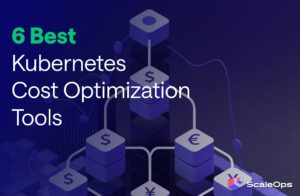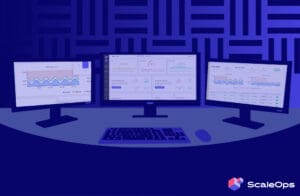In our previous post, we explored why Kubernetes cost optimization often falls short. Teams are stuck chasing outdated recommendations instead of addressing inefficiencies in real time. But even with the best automation strategies, organizations face deeper challenges that make cost optimization difficult to implement.
Cost control isn’t just a technical challenge. It’s an organizational one too.
Compliance restrictions prevent teams from using third-party cost optimization tools, developers resist changes that could impact application performance, and traditional FinOps approaches highlight inefficiencies without delivering real cost-saving actions.
In this post, we’ll dive into these real-world blockers and the strategies organizations can use to overcome them. We’ll explore how self-hosted automation helps address compliance concerns, how platform engineering bridges the gap between developers and DevOps, and how embedding cost optimization into developer workflows can eliminate the manual friction that keeps costs high.
Blockers and Barriers: From Highly-Regulated Industries to the Culture that Supports FinOps
Ask any Kubernetes team why their cloud costs are spiraling, and you’ll likely hear some version of the same answer: it’s complicated. The complexity isn’t just about tuning workloads or scaling infrastructure, it’s about navigating real-world constraints that make cost optimization hard to implement in practice.
For highly regulated industries like finance, healthcare, and government, one of the biggest roadblocks is where the optimization logic runs. Sending detailed cost and resource telemetry to an external SaaS provider is a non-starter. These organizations operate under strict compliance requirements, often within air-gapped or highly controlled environments where interacting with a SaaS solution is highly constrained or outright banned.
A self-hosted cost optimization system solves this by running entirely inside the Kubernetes cluster. It keeps all usage and operational data within the organization’s network, ensuring alignment with internal governance policies. This approach also aligns with a growing shift toward cloud repatriation, as companies move workloads back on-premise or into hybrid environments to regain control over cost, performance, and data sovereignty.
Then there’s the human side of the equation.
DevOps engineers manage infrastructure and cloud costs, while developers focus on building new products and features that drive business value. When cost-saving initiatives require manual intervention, the process breaks down. Developers avoid making changes, DevOps struggles to enforce efficiency, and costs continue to rise.
So, how do you bridge the gap?
Platform Engineer: The Bridge Between Cost and Velocity
Platform engineering plays a crucial role in bridging the gap between cost control and developer productivity. Instead of treating cost optimization as an afterthought, automation must be embedded into the platform—not as a passive reporting tool, but as an active system that dynamically optimizes workloads in real time.
This is where ScaleOps enhances Kubernetes-native scaling mechanisms like HPA, KEDA, and Cluster Autoscaler. By continuously adjusting pod-level resource allocations, ScaleOps ensures workloads run efficiently without unnecessary over-provisioning. Developers don’t have to manually tweak CPU or memory requests. The platform does it for them, preserving performance while minimizing waste.
Visibility isn’t enough
Many organizations turn to FinOps tools for visibility into cloud costs, but visibility alone doesn’t solve the problem. Most platforms surface inefficiencies, but leave engineers with the actual cost-saving decisions, leading to reactive, manual interventions.
A cost optimization strategy that stops at visibility is incomplete. Real impact happens when FinOps is integrated into platform engineering, automating chargeback mechanisms and enforcing cost optimizations without human bottlenecks.
At its core, Kubernetes cost optimization isn’t just about cutting waste—it’s about removing the barriers that make cost control difficult in the first place. Compliance constraints, organizational silos, and inefficient processes have made cost reduction harder than it needs to be. But with automation built on an intelligent resource manager that continuously optimizes workloads, respects compliance requirements, and integrates seamlessly with FinOps, cost control doesn’t have to be a battle. It can be effortless, efficient, and—most importantly—automatic.
ScaleOps: Kubernetes Cost Optimization That Works
In this two-part series, we explored why Kubernetes cost optimization is fundamentally broken—teams struggle with outdated recommendations, manual processes, and organizational barriers that prevent real change.
While automation is key, true cost efficiency requires overcoming compliance constraints, eliminating friction between teams, and integrating optimizations directly into developer workflows.
That’s why we built ScaleOps differently.
Rather than relying on static reports or reactive suggestions, ScaleOps provides real-time, pod-level optimization that dynamically adjusts workloads based on live demand. Our self-hosted platform keeps sensitive data private and compliant, while automating resource allocation behind the scenes.
By embedding cost optimization into Kubernetes-native scaling mechanisms, ScaleOps eliminates the manual burden on DevOps and developers, ensuring that cost efficiency happens continuously, automatically, and without disruption.























